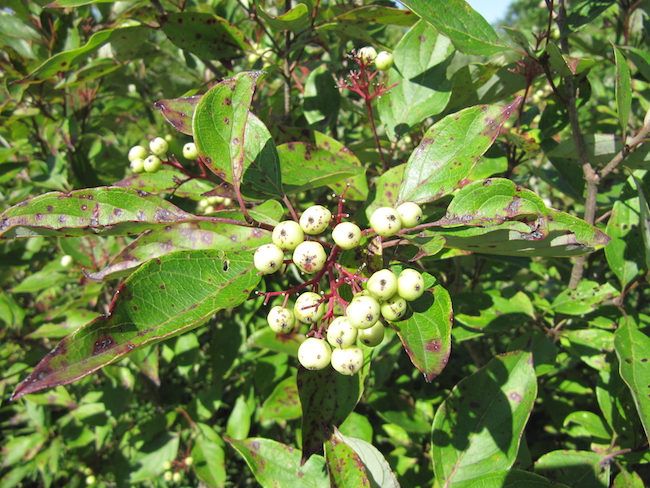Hiking in nature, going for a romp in the woods, or walking through a field all offer peace and respite from the busy world around us. But nothing is worse than going home and finding an itchy rash on your leg from a run in with poison ivy! Usually on such outings, dog owners enjoy the company of their loyal pup. But do these poisonous plants have the same effect on dogs as they do on humans? Find out how canines cope with poison ivy, oak and sumac.
The “poisonous” agent in these plants is known as urushiol. This is the allergenic oil that seeps into the surface of the skin and creates the bumpy red irritation that oozes and spreads rapidly across the body. In extreme cases, poison urushiol can cause humans to get fevers, skin swelling, and have difficulty breathing if the oils are inhaled (via burning the brush, etc.).
The leaves can be difficult to recognize or distinguish from other plants:
Poison Ivy: Unfortunately, poison ivy is one of the more common urushiol-laden plants, as it can be found in most American states except for Alaska and Hawaii. These plant branches and leaves are fragile and easy to snap, which is what releases the oils onto the skin of whoever goes walking through the bracken.

Poison Oak: This plant usually grows in the drier western states such as California, but has also been found in the South and Midwest on occasion. Like poisonous animals, brightly colored markings on the leaves are meant to indicate a warning. Though poison oak begins as a green leaf, they gradually turn a patchy red color. Nature’s other warning is the three-leaf pattern, found in both poison ivy and poison oak.

Sumac: Thriving in tropical climates, sumac is found most often in the southern states of America, where there is a great expanse of swampy and wooded areas.

How Poisonous Plants Affect Dogs
Some people believe that because their dogs have a thick fur coat that the oils from these poisonous plants will not have access to their skin. Though dogs are less likely to suffer from the aggravating rashes, when one of these poisonous plants gets too close, canines are still susceptible. Domestic cats have thick fur that covers their whole bodies, but dogs tend to have their under bellies, and inside of their legs more exposed. The thin fur in these areas (or across all surfaces if the dog has had a close shave or been recently groomed) leaves the dog’s skin open to infection if he should go walking through an ivy bush. Once the poisons sinks into their skin, the rashes and discomfort will take effect.
Fortunately, though a dog will have the same itchy rashes and blisters that humans get when they touch the plant, the infection is common, and is seldom instantaneous. Rashes and blisters can be avoided with the proper precautions. Find out how to prevent poison oak, icy and sumac from penetrating a pup’s skin, and how to treat the rashes if a dog were to be infected.

